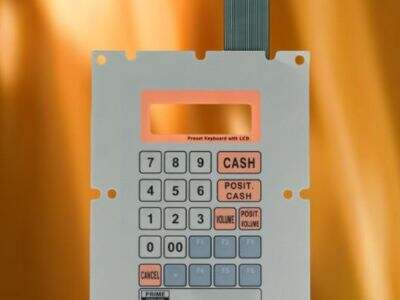Αυτοί οι αισθητήρες ονομάζονται αισθητήρες ευελιξίας, καθώς ουσιαστικά μας δίνουν μια ιδέα για το πόσο κάτι λυγίζει. Για παράδειγμα, είναι σαν μικροί αισθητήρες που μπορούν να μας πουν αν κάτι σφίγγεται ή τεντώνεται. Ωστόσο, αυτό εγείρει το ερώτημα: πόσο καλοί είναι πραγματικά οι αισθητήρες ευελιξίας και τι πρέπει να γνωρίζουμε γι' αυτούς για να τους χρησιμοποιήσουμε αποτελεσματικά;
Κοιτάζοντας πόσο καλά αισθητήρες Flex ακολουθεί την κίνηση
Οι αισθητήρες Flex λειτουργούν καλά όταν είναι πλήρως λυγμένοι ή ευθεία αλλά η τεχνολογία δεν είναι τόσο αξιόπιστη όταν υπάρχει μια απόκλιση μεταξύ πλήρους κίνησης και κατάστασης ανάπαυσης. Μπορεί να μην εντοπίζουν πάντα κάθε στροφή της γραμμής ή να μας παρέχουν ακριβή ανάγνωση. Μια τέτοια ικανότητα ονομάζεται ακρίβεια και είναι αυτό που πρέπει να καταλάβετε και σε περίπτωση αισθητήρων ευελιξίας. Όσο περισσότερο γνωρίζουμε για το πόσο ακριβείς είναι οι αισθητήρες μας, τόσο πιο πρόθυμοι μπορούμε να εμπιστευτούμε τα δεδομένα.
Μέτρηση της ευαισθησίας των αισθητήρων ευελιξίας για συνεπή εξόρυξη δεδομένων
Φλεξ αισθητήρες Οι αισθητήρες Flex απαιτούν ευαίσθητα σήματα. Όσο μεγαλύτερη είναι η ευαισθησία ενός αισθητήρα ευελιξίας, τόσο καλύτερη είναι η ικανότητα ανίχνευσης μικρών κινήσεων ή καμπυλών. Αν κάποιος έχει υψηλή ευαισθησία, σε κάποιο βαθμό μπορεί να ανιχνεύσει και τη μικρότερη στροφή, ενώ με χαμηλή ευαισθησία θα υπάρχει λιγότερη κίνηση που μπορεί να χάσει τις κινήσεις. Η επιλογή της σωστής ευαισθησίας είναι πολύ σημαντική όταν επιλέγουμε έναν ευέλικτο αισθητήρα για αυτό που πραγματικά χρειαζόμαστε.
Οι περιορισμοί των αισθητήρων ευελιξίας όσον αφορά τις μετρήσεις ευελιξίας
Η έξοδος των αισθητήρων ευελιξίας έχει ένα εύρος, το οποίο είναι το μέγιστο που μπορούν να λυγίσουν πριν αποτύχουν να λειτουργήσουν σωστά. Για παράδειγμα, αν λυγίσουμε πολύ έναν αισθητήρα ευελιξίας τότε μπορεί να σπάσει ή να μας δώσει ψευδείς ενδείξεις. Έτσι, είναι απαραίτητο να βρεθεί το εύρος του αισθητήρα ευελιξίας και να μην διπλώσει περισσότερο. Χρησιμοποιώντας αυτά τα δεδομένα και μένοντας μέσα στην περιοχή του αισθητήρα ευελιξίας θα μας δώσει πιο ακριβείς ενδείξεις.
Συγκρίσεις ακρίβειας για διαφορετικούς αισθητήρες ευελιξίας ανάλογα με την απαίτηση
Οι ίδιοι οι αισθητήρες ευελιξίας είναι εντελώς διαφορετικού είδους, με τους τύπους μοντέλων να είναι τεράστιοι και ευρύχωροι. Μερικά είναι καλύτερα στο να ανιχνεύουν μεγάλες κινήσεις, ενώ άλλα θα λειτουργήσουν καλά για μικρές καμπύλες. Πριν χρησιμοποιήσουμε ένα συγκεκριμένο μοντέλο αισθητήρα ευελιξίας στο έργο μας, πρέπει να συγκρίνουμε την ακρίβεια τους. Η επιλογή του κατάλληλου αισθητήρα ευελιξίας για τη δουλειά θα μας δώσει μετρήσεις που θα είναι όσο το δυνατόν πιο ακριβείς.
Οδηγός για την βαθμονόμηση και τη συντήρηση ακριβών αισθητήρων ευελιξίας
Βαθμονόμηση της πρώτη πλάκα υπολογιστή η τακτική χρήση θα βοηθούσε στην αύξηση της ακρίβειας των αισθητήρων μας. Κλιματισμός: η βαθμολόγηση σημαίνει ότι ο αισθητήρας μετρά ακριβείς τιμές και αν όχι, τότε θα μας δώσει τις κατάλληλες ενδείξεις. Μπορείτε επίσης να φροντίσετε τους αισθητήρες σας να είναι καθαροί και απαλλαγμένοι από βρώμα ή συντρίμμια που μπορεί να διαταράξουν τη λειτουργία τους. Έτσι, εφαρμόζοντας αυτά τα κόλπα μπορούμε να βεβαιωθούμε ότι οι αισθητήρες μας λειτουργούν με την μεγαλύτερη ακρίβεια.
Συνοπτικά, οι αισθητήρες ευελιξίας μπορούν να σας δώσουν γνώση της κατεύθυνσης της κίνησης / ευελιξίας, αλλά πρέπει να χρησιμοποιηθούν κατάλληλα για να έχουν υψηλή ευαισθησία, όρια εμβέλειας και ακρίβεια. Η επιλογή του κατάλληλου αισθητήρα ευελιξίας, η τακτική του βαθμολόγηση και έλεγχος θα επιτρέψουν στα δεδομένα που θα έχουμε από αυτούς τους αισθητήρες να είναι πάντα αξιόπιστα. Όταν θα χρειαστεί να μετρήσουμε ξανά τη γωνία κάμψης, οι αισθητήρες ευελιξίας Soushine μπορούν να παρέχουν τα πιο αξιόπιστα και αξιόπιστα αποτελέσματα.


